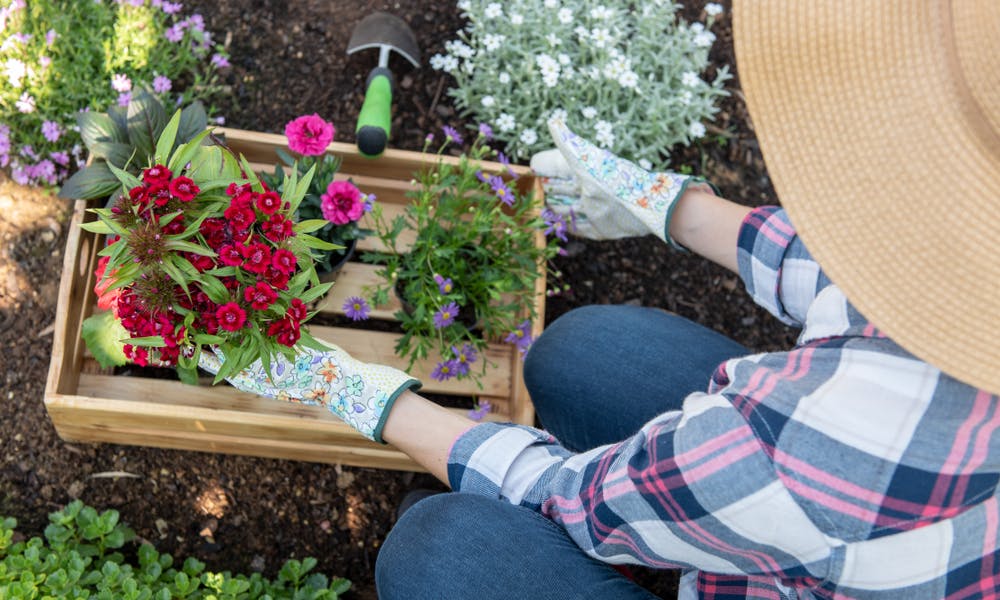MENU
How to Plant Flowers – Everything You Need to Know About Having A Successful Garden

If you have finally decided on having your flower garden, but you are not sure what are the steps to it, you are in the right place. This article provides all the information you need. Whether you’ve done this before or you are a first timer, you are about to find out a sequence of easy steps to follow to create a beautiful garden. In the following lines, we discover how to:
* Analyze your soil
* Choose the right place
* Pick the flowers
* Plant the bloomers
* Ideas of flowers to plant in your garden
Analyze Your Soil
First, it is time to pay more attention to what kind of soil you own. An easy-fitting ground that is well-drained is the finest one for planting flowers. You want to be able to work with the dirt. Also, if you have the opportunity, adding compost helps your soil to improve. If somehow you have the chance to test your land, this is even better, but not essential. It is also necessary to state that you should not plant when the ground is wet, such as following heavy rain.
Choose the Right Place
Not all flowers thrive in the same conditions. Some plants prefer more light, while others prefer the shades. Depending on the area you live in and your climate, choose which spots are better for your flowers. A plant that desires full sun should have approximately six hours or more of sunlight. Other ones can demand more shade, meaning the maximum light they can take is up to four-six hours. Thus, you need to research your plants before getting to work in your garden.
Pick the Flowers
This step is not only about merely choosing the flowers you like best. It is essential to decide how much time you can spend taking care of them, whether they are annuals or perennials, and what maintenance you need to do.
Pick the ones that you genuinely like and design the garden in your own way. An aspect worth considering is the timing. You might have chosen the colors and plants you enjoy, but not all of them might have the same blooming season. Some of them flower in spring; others can go quite late in colder months.
Lastly, you need to consider colors. Whether you choose contrasting shades or complementary ones, it is up to your preference. However, the more vivid the colors, the more beautiful the result is likely to be.
Plant the bloomers
After selecting the right places and the flowers, it is time to plant. Cultivating a vast region is not necessary. Just make sure you dig as deep as the flowers need. If you are planting flower seeds, you should read the instructions on the seed pack. The instructions can vary, and it is better to know exactly how deep in the ground you must plant and how far apart from other bloomers.
On the other hand, potted plants should be positioned at the same level as the soil. After you remove them from the pot, clean them off by shaking gently all the dirt that you possibly can. Position it in the ground and add compound if possible. Following this, put the soil back to its place. The first watering should be after you plant the flower. If you want to have more flowers and fewer weeds, plant the flowers closer together.
Ideas of Flowers to Plant in Your Garden
There is an abundant choice when it comes to what flowers you can choose. If you are a first timer, you might want to check the list below to find some inspiration.
The sunflower can be a yellow, brown, or mixed color plant. They are pretty adaptable to any soil. Spring and fall are the perfect time to plant them and after the frost has passed. The seeds can be scattered 6 inches from each other.
Daffodils come with yellow, orange, or white blooms. They like well-drained soils. Planting should be done before frosting when the ground is still cold. Considering that they are smaller, it is best to sow the seeds closer to each other.
Zinnias are orange, red, yellow, pink, or white flowers. They are fond of fertile soil, rich in nutrients. The great thing about them is that they can be planted throughout the year, but not during the frost. They need at least six hours of sunlight daily.
Wax begonias are orange, yellow, pink, or white plants. They must have fertile soil; otherwise, they cannot survive. The best place for them is between light and shade. Seeds can be planted closer, or even mixing the various colors that exist.
Nasturtium is an orange, yellow, red, or cream flower. Well-drained soil is perfect for them, but sunlight is necessary for this one. Plant several together, and they bloom quickly after you plant them.
Coneflowers come in diverse colors such as pink, yellow, red, orange, white, and others. Average soil is good for them, while spring or fall is the recommended planting season.
Snapdragons are yellow, orange, peach, red, pink, white, or violet colored annuals. Full sunlight and well-drained soil are where you should plant them.
Morning glories are blue, pink, violet, red, or white bloomers. They can easily be planted indoors or outdoors. If they are outside, sow the seed after frosting. The seeds should be soaked 24 hours before planting, and well-drained soil is mandatory.
Sweet peas are red, pink, blue, or violet flowers. Moderately fertile and well-drained soil is a great option for them. When they start growing, they need some support. A fence or pieces of wood are great ideas to sustain the plant.
All in all, planting flowers can not only be a relaxing activity but also enrichen your garden and create a beautiful environment.

